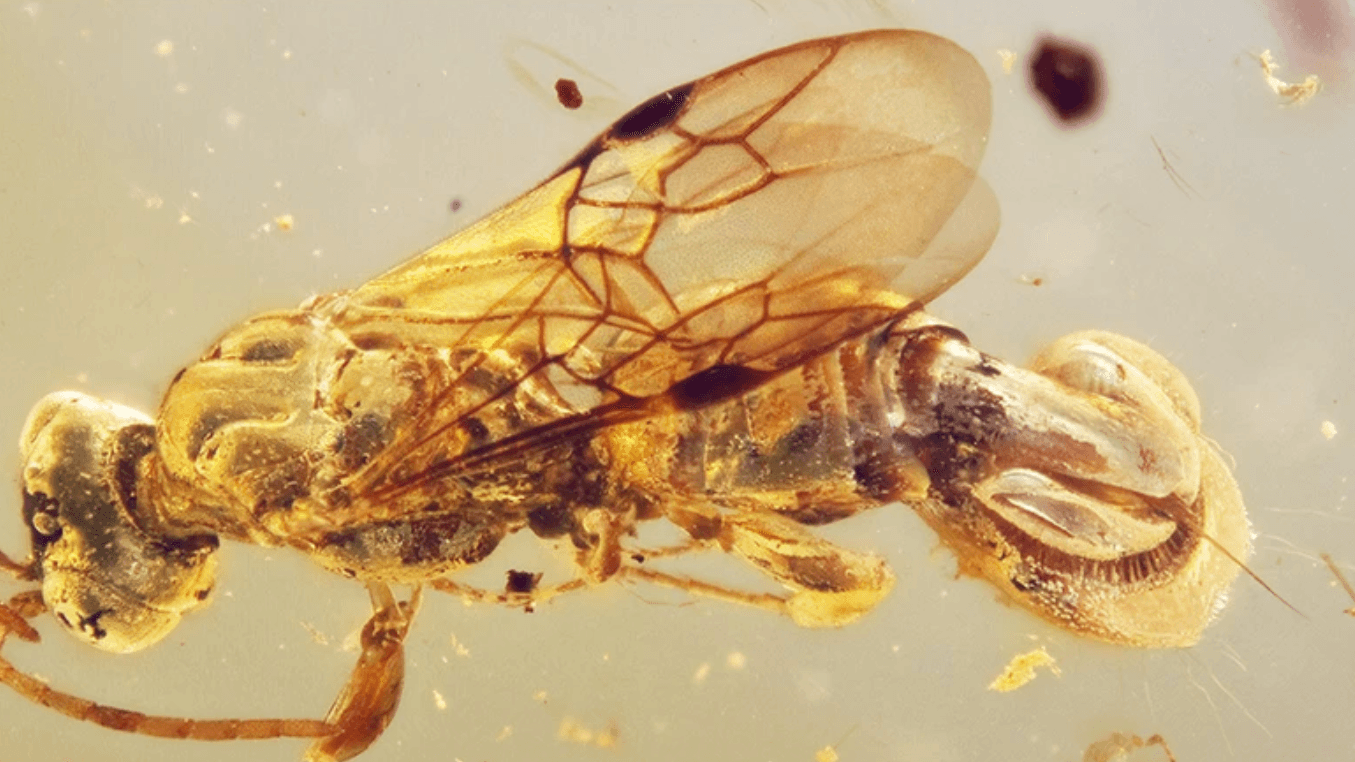Discovered in amber
Bizarre wasp owned a fly trap
28.03.2025 – 03:55 a.m.Reading time: 2 min.
Scientists have made a sensational discovery in an extinct wasp type. She apparently caught prey for her offspring.
A extended wasp species that had only been identified now had a property that was previously unknown to insects that impressed scientists. It was discovered in Bernstein in Myanmar. According to the investigation of 16 rehearsals, researchers around Lars Vilhelmsen were certain: Here they had something special in front of them.
At first, the scientists thought that an air bubble was formed on the body of the small wasp called Sirenobethylus when the animal was trapped in tree resin about 100 million years ago. “But then I looked at a few more copies and then went back to the first. That was actually part of the animal,” said Vilhelmsen to the US broadcaster CNN. It was a kind of bag from two flaps that could open and close the wasp-similar to a Venus fly trap.
The find was a mystery, because apart from plants, such a mechanism has not yet been found in any insect. Apparently, the flaps did not serve to kill and eat small insects. Instead, she just caught the prey and put eggs in it, according to the theory of the scientists. These could develop into larvae in the insect, which then killed her host animal. That is the most likely explanation for the appendix to the back. Another theory saw it a sack in which the offspring was only transported.
Bizarre methods in terms of the nutrition of young people are already known from other types of wasps. So the Kuckuck-Wesperse lays its eggs in nests from other wasp species. The larvae then drill into the descendants.
Millions of years ago, certain trees, in particular conifers, had a sticky resin to close injuries to their barks or ward off pests. When small insects or other organisms got on these resin drops, they stayed on it and were completely enveloped.
Over time, the resin hardened, was buried under geological conditions and by pressure and warmth to amber. This process of fossilization often preserved the enclosed insects in astonishingly detailed state, which today gives valuable insights into long -past ecosystems.






